The origin of the Louvre dates back to the 1200s. Once a royal residence, it became a museum in 1793 during the French Revolution and is now home to artworks dating from the 7th millennium BC to the 1850s. The collections are displayed on five levels, in three interconnecting wings named after three prominent figures from French history: Richelieu (1585 – 1642), chief minister of King Louis XIII, Sully (1559 – 1641), chief minister of King Henri IV, and Denon (1747 – 1825), first director of the Musée du Louvre.
Museum Plan
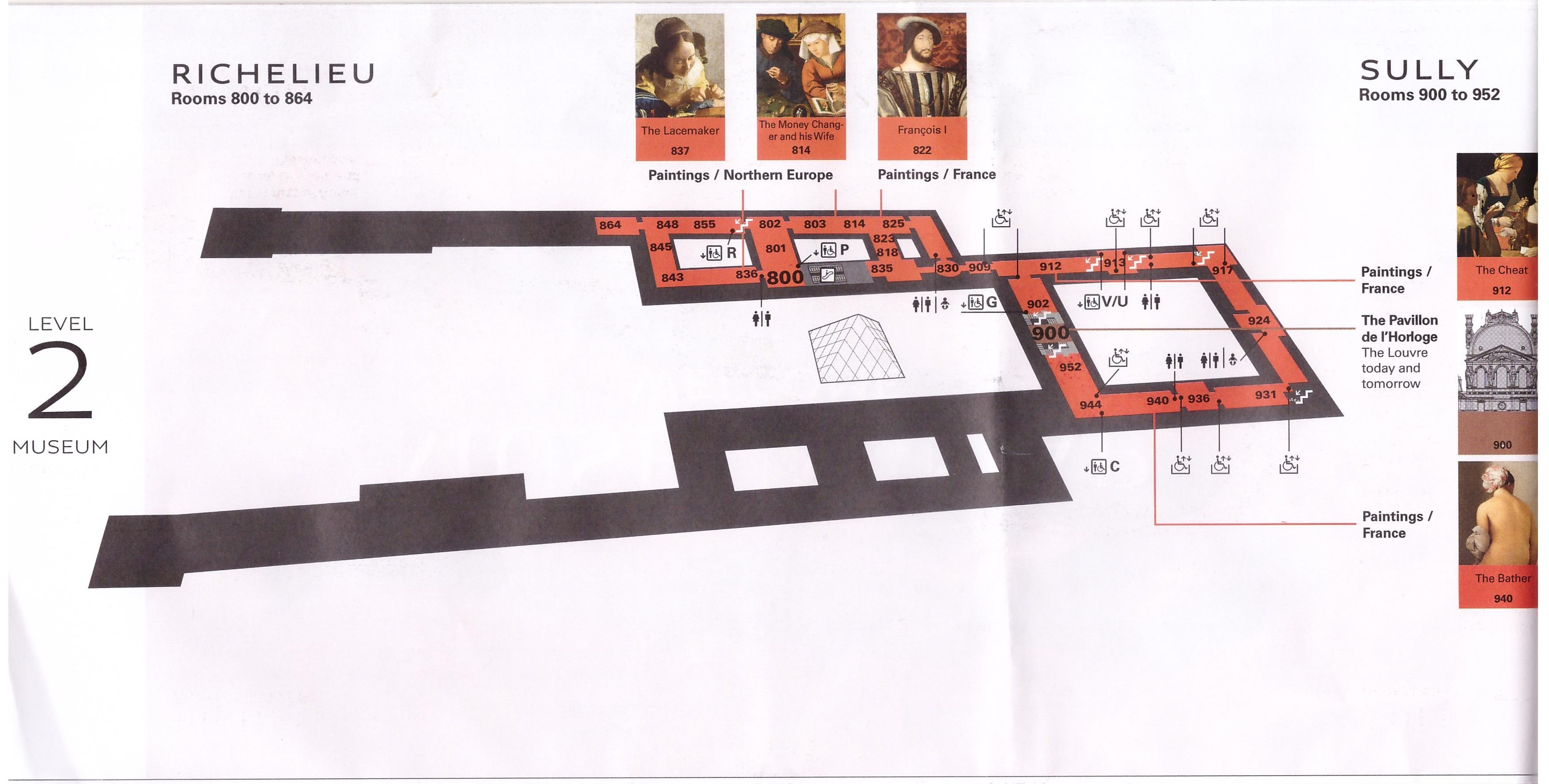
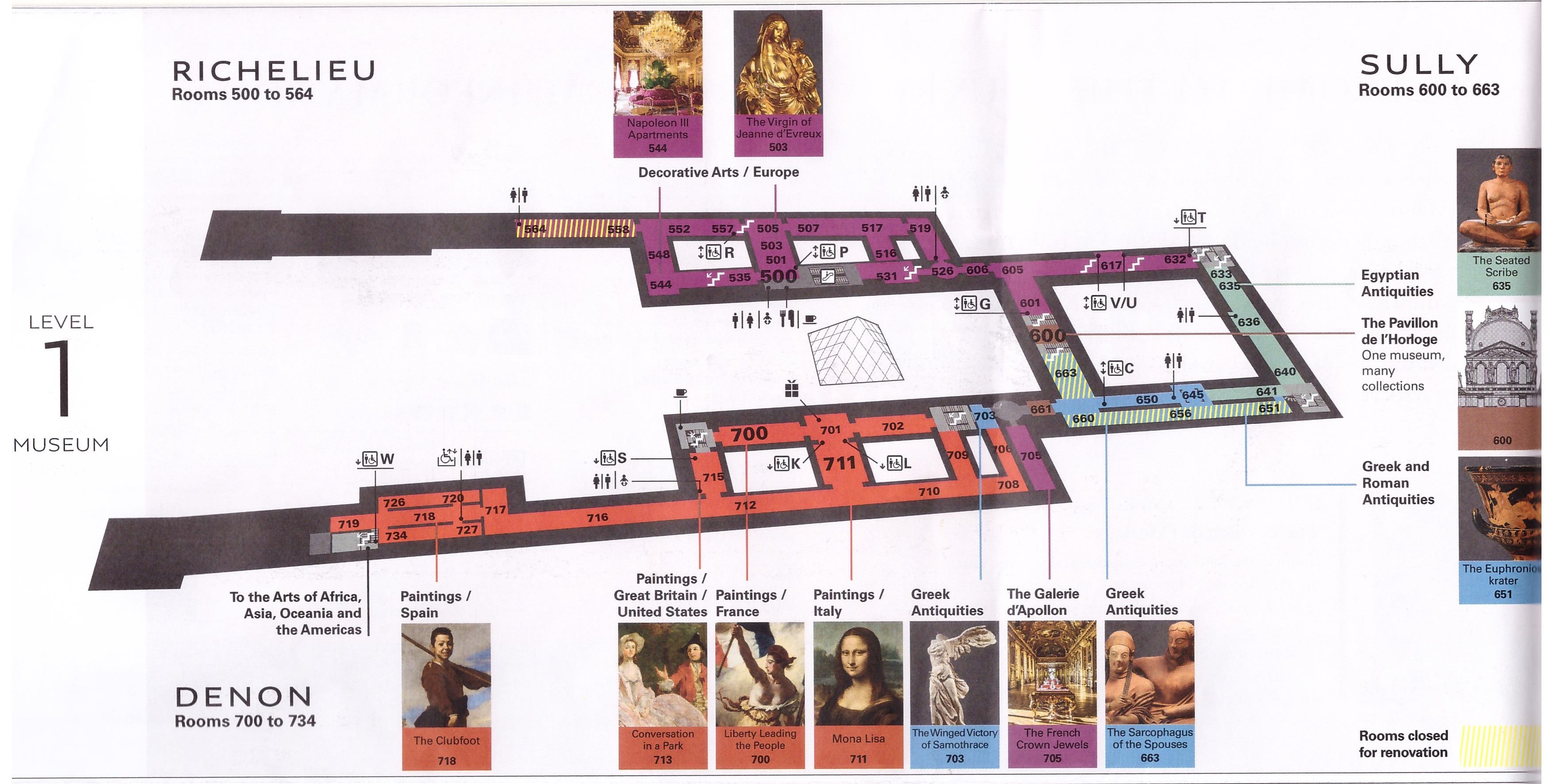
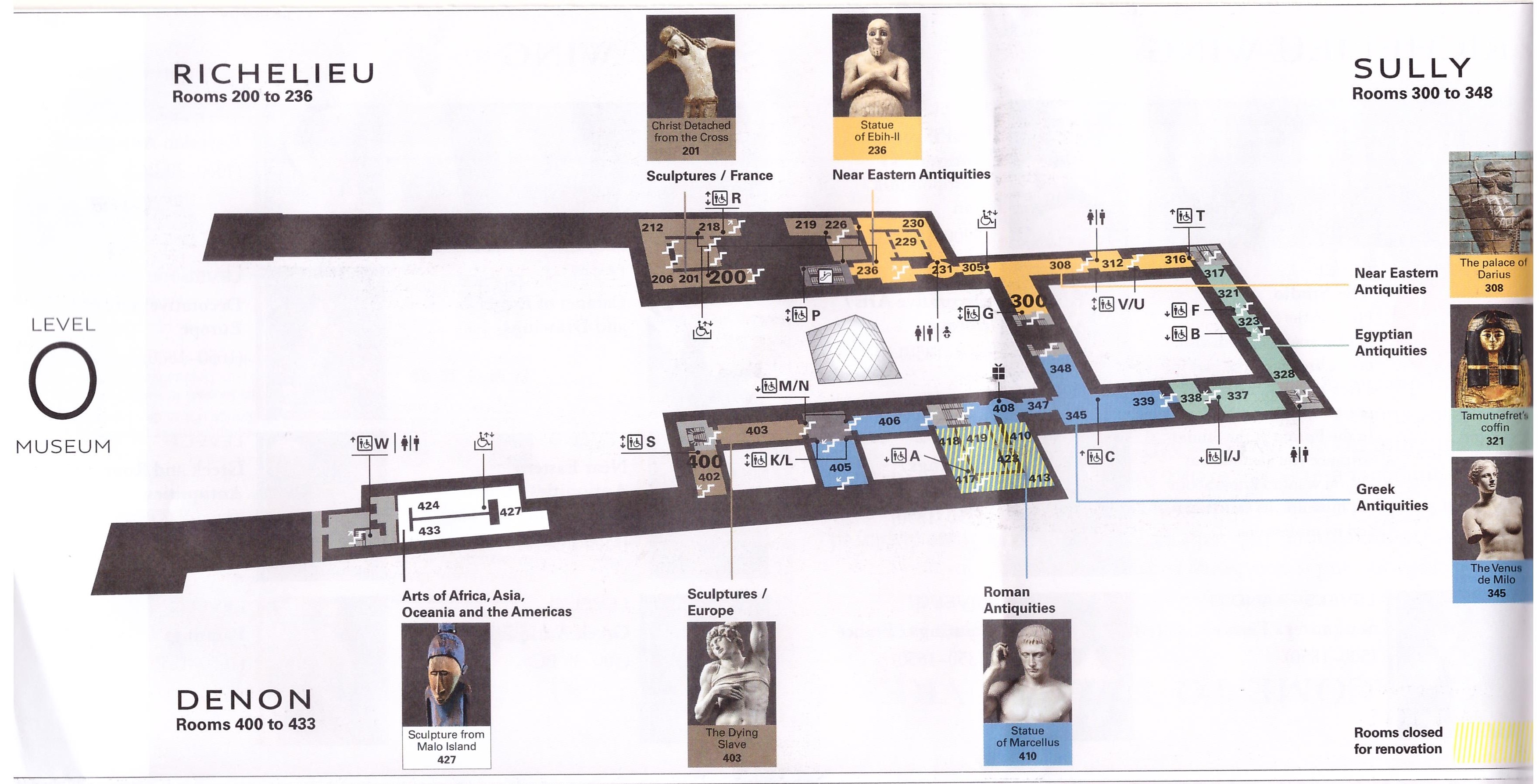
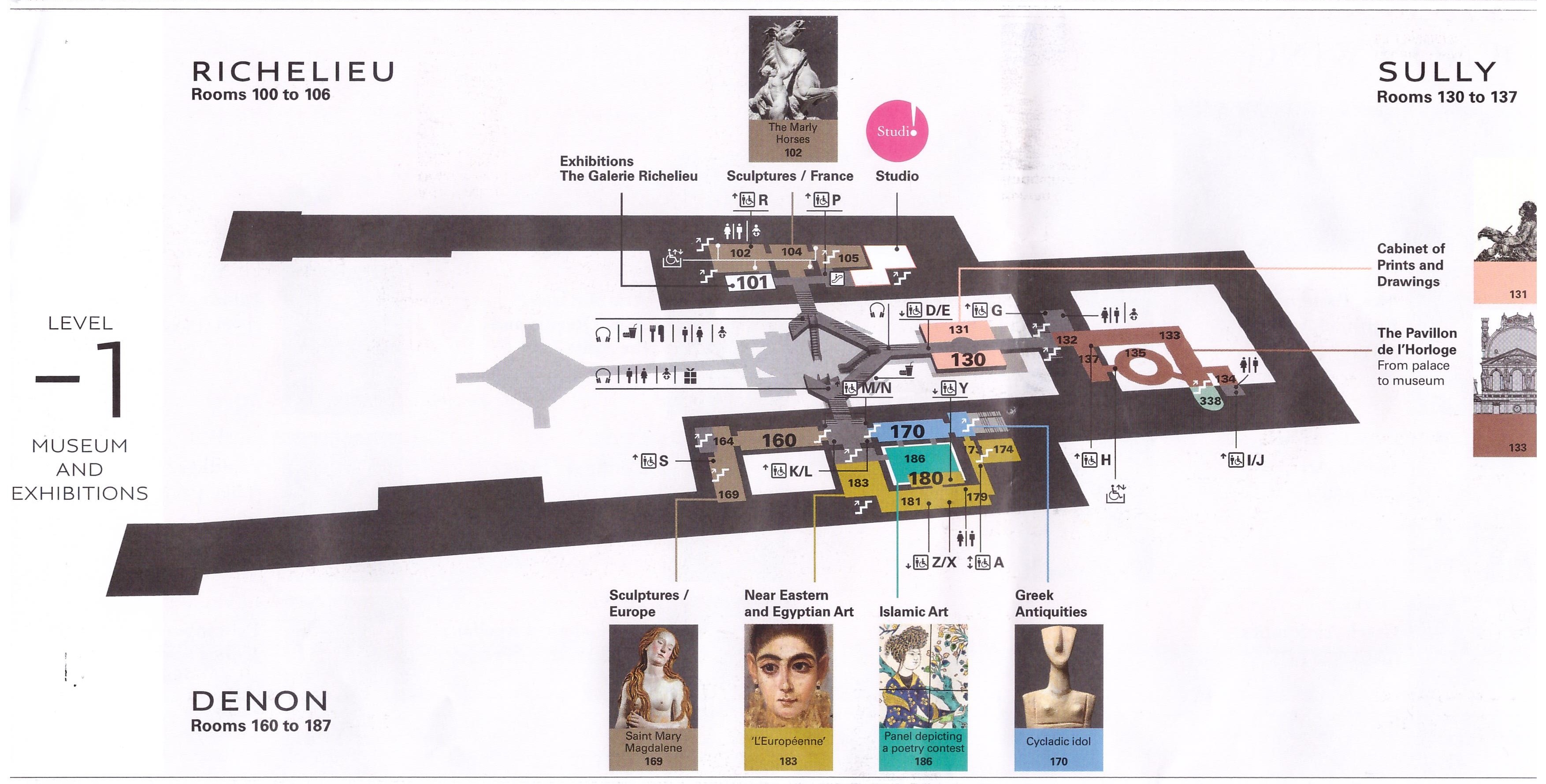
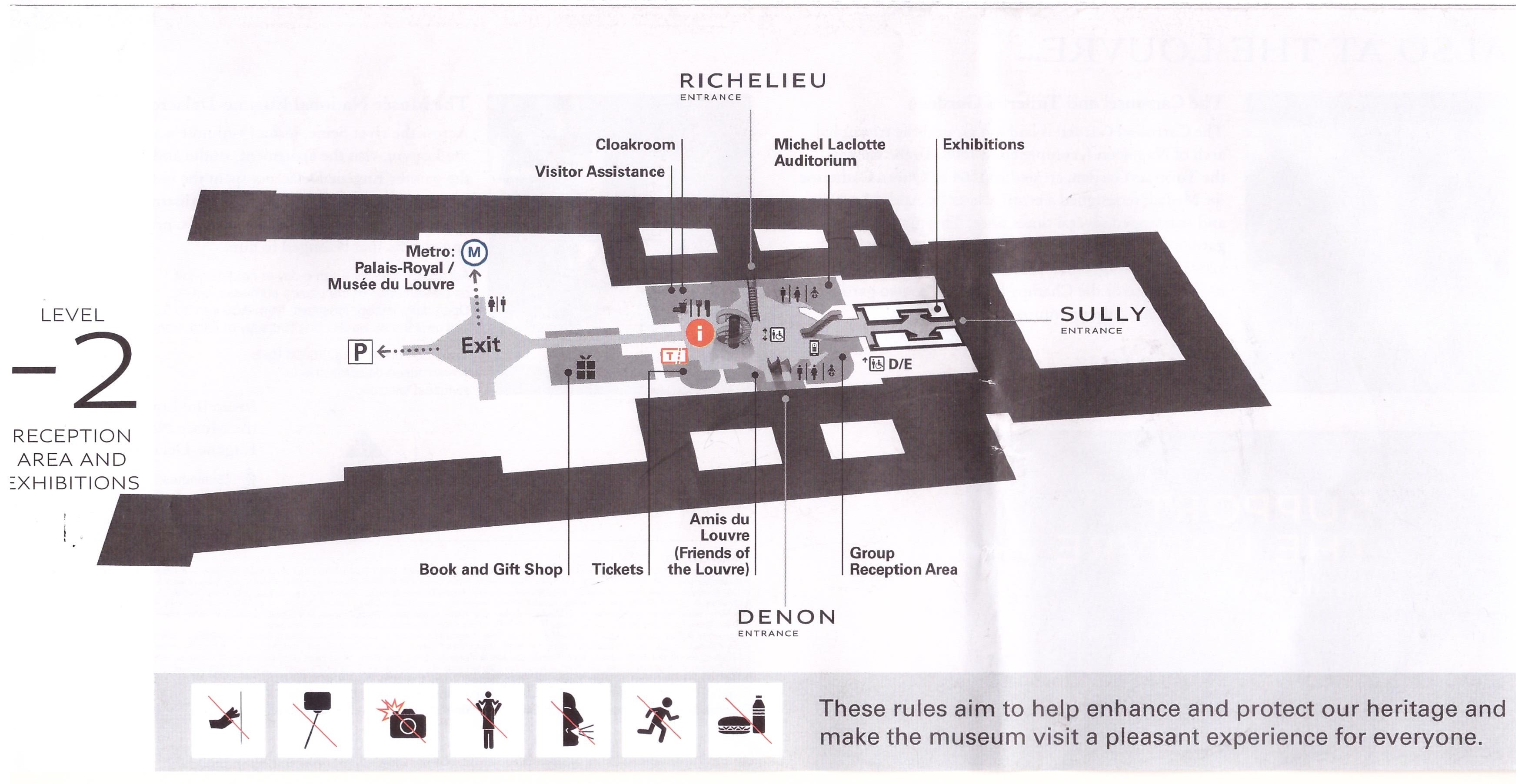
Source: Museum Map Brochure
Mona Lisa
A gentle smile
Leonardo da Vinci used a painting technique called sfumato: he applied multiple layers of pigments bound in oil to create subtle transitions from shadow to light, bringing his model’s gentle smile to life.

An imaginary landscape
A path on the left draws our gaze to mountains bordered by lakes. This wild, majestic landscape suggests the slow formation of the Earth, the battle of the elements and the erosion caused by time. Leonardo mastered so-called ‘atmospheric perspective’, using different shades of blue to blur the outlines and give the scene a striking depth.
Leonardo da Vinci never finished the Mona Lisa
The lower part of the landscape is evidently incomplete: the forms are barely sketched. Leonardo began this partially experimental painting in about 1503 and never finished it. He took it with him everywhere he went, until his final trip to France in 1516 at the invitation of King François I.The king bought the painting, which thus entered the French royal collection.
Source: Info Board
The Wedding Feast at Cana
At over 6 metres high and almost 10 metres wide, The Wedding Feast at Cana is the biggest painting in the Louvre. It depicts an extraordinary banquet with a crowd of some 130 different characters in a blaze of light and colour.

Vérone, 1528 – Venise, 1588
Oil on panel transferred to canvas, about 1562-1563
Veronese painted the scene for the refectory of the monastery on the island of San Giorgio Maggiore in Venice. In 1798, Napoleon’s troops confiscated the painting and had it shipped to Paris. When the Empire fell in 1815, most of the confiscated paintings were returned to Italy, but it was feared that the return journey would damage this large work, which was therefore kept in exchange for a painting by Charles Le Brun, The Feast in the House of Simon. Nonetheless, Veronese’s huge masterpiece had to be moved twice in later years, when Paris was at war, in 1870 and 1939.
Source: Info Board
Portrait of a Woman of the Court of Milan
incorrectly known as La Belle Ferronnière

Vinci (près de Florence), 1452 – Amboise (France),
1519 Oil on panel, about 1490-1497
The sitter has traditionally been identified as Lucrezia Crivelli, mistress of Ludovico Sforza. Duke of Milan, but this identity has never been confirmed. Some critics believe it to be a portrait ol Ludovico’s wife Beatrice d’Este or of Isabella of Aragon. The title La Belle Ferronnière stems from a confusion with another portrait.
Source: Info Board
The Virgin of the Rocks

Vinci (près de Florence), 1452 -Amboise (France),
1519 Oil on panel transferred to canvas, about 1483-1490
Commissioned by the Confraternity of the Immaculate Conception in San Francesco Grande in Milan.
The rocks of this grotto with its luxuriant vegetation give the scene a mysterious atmosphere. The infant Saint John, kneeling on the left in an attitude of prayer, is blessed by Jesus, who is held by an angel under the protection of the Virgin Mary.
Source: Info Board
The Winged Victory of Samothrace
The Winged Victory of Samothrace dates from the Hellenistic period (3rd-1st century BC). Greek sculptors at the time began to diverge from classical tradition and adapt their approach to create statues made for the three-dimensional settings in which they were to be placed.

The Winged Victory, for example, was not intended to be looked at front on but rather from a three-quarter left angle. It is from this perspective that the monument – of the Greek goddess Nike (Victory) landing on this huge ship’s prow base – can be fully appreciated. The statue’s powerful forward-moving stride, swept-back wings and sophisticated drapery were designed with this viewpoint in mind.
Two pieces of evidence attest to the ‘three-quarter left view’ theory.
In the Sanctuary of the Great Gods at Samothrace, the Winged Victory’s foundations show that the monument was not aligned with the precinct or building surrounding it but angled to the left of the viewer.

The sculptural differences between the statue’s sides are also striking: the drapery on the left has been fashioned with great care, while on the right, only a few roughly carved folds can be seen. It is not a question of one side being more damaged than the other; the sculptor simply wasted no effort in perfecting something that was not intended to be seen by the viewer.
Source: Info Board
Crown of Louis XV

Paris, 1722
Partially gilded silver, facsimiles of original gemstones, satin
Laurent Ronde, jeweller to the king, supplied this crown for the coronation of Louis XV in Reims in 1722. It was designed by his son Claude and crafted by the young goldsmith Augustin Duflos. The fleur-de-lis at the front of the crown once featured the ‘Regent’ diamond while the other fleurs-de-lis on the band were set with eight ‘Mazarin’ diamonds, and the ‘Sancy’ diamond sat at the top.These gemstones were later replaced with replicas.
Source: Info Board
The Mummy
“I shall not decay”
The preservation of the deceased’s both guaranteed him access to the next world by preventing him from becoming an errant spirit. The methods used by embalmers varied according to the period and the wealth of the family. The procedure described by the Greek historian Herodotus, who visited Egvpt in the 5th century A.D. has been corroborated by modern research.

“Precious oil to bring your body back to life”
The liver, lungs, Intestines and stomach were preserved separately in covered vessels known as “canopic jars.” The body was dried using natron, a natural substance similar to salt. It was then prepared with aromatics and unguents, which darkened over time. This darkening was mistaken for the effects of bitumen, hence the term “mummy,” which is derived from a Persian and Arab word meaning “wax,” “bitumen,”and “embalming products.” Finally, the body was wrapped in linen bandages. Amulets and inscriptions were sometimes wrapped among rhe layers.
“Open is your mouth, open are your eyes”
During the mummification process, the rituals of the Opening of the Mouth ceremony were performed so that the deceased could regain use of his faculties. The Egyptians believed that the preservation of the body, the restoration of the deceased’s faculties through ritual, and burial were all carried out for the first time by rhe goddesses Isis and Nephthys, aided by the god Anubis, on the body of their brother Osiris.
Source: Info Board

Jardin des Tuileries
Queen Catherine de’ Medici began the building of the Tuileries Palace in 1561, on the site of the tile kilns, and had the first garden landscaped. The Palace became a royal residence, and was transformed by Louis XIV who commissioned his gardener, Andre Le Notre, to design a new park in front of the building in 1666. This vast area, surrounded by terraces and with a one-point perspective dominating the central axis of Paris, was made accessible to the public.

The Palace was set on fire in 1871, and destroyed in 1883.
Source: Info Board



Leave a Comment